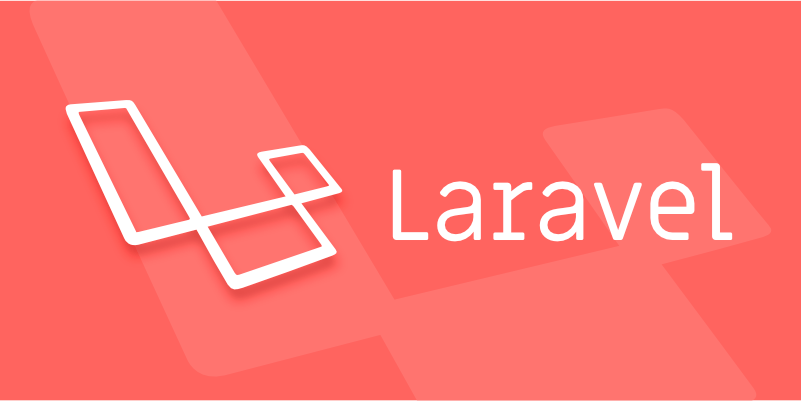Laravel's queue priority is controlled through the startup sequence. The specific steps are: 1. Define multiple queues in the configuration file; 2. Specify the queue priority when starting a worker, such as php artisan queue:work --queue=high,default; 3. Use the onQueue() method to specify the queue name when distributing tasks; 4. Use Laravel Horizon and other tools to monitor and manage queue performance. This ensures that high-priority tasks are processed first while maintaining code maintainability and system stability.

Laravel's queue system is powerful, and when you start dealing with multiple types of jobs that need different levels of urgency, setting up queue priorities become a practical necessity. It's not just about getting things done — it's about getting the right things done first.

Understanding Queue Priorities in Laravel
In Laravel, queues are processed by workers, and each worker listens to one or more queues. By default, a worker processes jobs in the order they're added — FIFO (first-in, first-out). But if some jobs are time-sensitive or more critical than others, you can assign them to a separate, higher-priority queue.

For example, imagine your app sends email notifications and also runs nightly data syncs. You'd want the emails to go out quickly, while the data sync can wait. In this case, you might have two queues: high for emails and default for the syncs.
To define multiple queues, update your queue.php config file:

'default' => env('QUEUE_CONNECTION', 'redis'),
'connections' => [
'redis' => [
'driver' => 'redis',
'connection' => 'default',
'queue' => 'default',
'retry_after' => 90,
],
],But here's the catch — the actual priority behavior comes from how you run the queue workers.
Running Workers with Priority Order
The key to queue prioritization lies in how you launch your queue workers. Laravel doesn't enforce a built-in priority system; instead, you control it by starting workers that listen to queues in a specific order.
Here's how you do it:
Start a worker that listens to the high-priority queue first , then falls back to lower ones:
php artisan queue:work --queue=high,default
This tells Laravel to check the high queue first. If there's a job waiting, process it immediately. If not, it moves on to the default queue.
You can chain as many queues as you need:
php artisan queue:work --queue=urgent,high,medium,default
The order matters. Laravel will always check the first queue in the list before moving on. This gives you a simple but effective way to prioritize work without complex logic.
A common mistake is assuming that all queues are processed simultaneously. They're not — they're checked sequentially.
Dispatching Jobs to the Right Queue
Once you've set up your queue priorities, you need to make sure jobs actually land in the correct queue. When dispatching a job, specify the queue name like this:
dispatch((new SendEmailJob($user))->onQueue('high'));
Or, using the helper function:
SendEmailJob::dispatch($user)->onQueue('high');
If you're using Laravel's job batching feature, you can also assign the whole batch to a specific queue:
Bus::batch([$job1, $job2])->onQueue('medium')->dispatch();
Make sure your naming convention is consistent. Use describe names like high , background , or critical so anyone reading the code later understands the intent.
Also, double-check that the queue name used in both the dispatch and the worker command match exactly — a typo can send jobs into oblivion.
Monitoring and Managing Queue Performance
Even with priorities in place, you should monitor how each queue behaves over time. Tools like Laravel Horizon (for Redis) or database-based monitoring can help track queue depths, failure rates, and processing times.
A few quick tips for managing performance:
- Use Laravel Horizon to see real-time stats for each queue.
- Set timeouts and retries appropriately based on job type.
- Consider scaling workers dynamically — more workers for high-priority queues during peak hours.
- Don't forget to clean up failed jobs regularly.
One thing to keep in mind: even if a queue is marked as "high" priority, if it's constantly backed up, you may need to scale up the number of workers handling it. Priority alone won't solve throughput issues.
That's basically how you configure and use queue priorities in Laravel. It's straightforward once you understand how the queue worker handles queue order and how to route jobs correctly. Not rocket science, but easy to mess up if you overlook small details like naming or execution order.
The above is the detailed content of Configuring and Using Queue Priorities in Laravel. For more information, please follow other related articles on the PHP Chinese website!

Hot AI Tools

Undress AI Tool
Undress images for free

Undresser.AI Undress
AI-powered app for creating realistic nude photos

AI Clothes Remover
Online AI tool for removing clothes from photos.

Clothoff.io
AI clothes remover

Video Face Swap
Swap faces in any video effortlessly with our completely free AI face swap tool!

Hot Article

Hot Tools

Notepad++7.3.1
Easy-to-use and free code editor

SublimeText3 Chinese version
Chinese version, very easy to use

Zend Studio 13.0.1
Powerful PHP integrated development environment

Dreamweaver CS6
Visual web development tools

SublimeText3 Mac version
God-level code editing software (SublimeText3)

Hot Topics
 What are routes in Laravel, and how are they defined?
Jun 12, 2025 pm 08:21 PM
What are routes in Laravel, and how are they defined?
Jun 12, 2025 pm 08:21 PM
In Laravel, routing is the entry point of the application that defines the response logic when a client requests a specific URI. The route maps the URL to the corresponding processing code, which usually contains HTTP methods, URIs, and actions (closures or controller methods). 1. Basic structure of route definition: bind requests using Route::verb('/uri',action); 2. Supports multiple HTTP verbs such as GET, POST, PUT, etc.; 3. Dynamic parameters can be defined through {param} and data can be passed; 4. Routes can be named to generate URLs or redirects; 5. Use grouping functions to uniformly add prefixes, middleware and other sharing settings; 6. Routing files are divided into web.php, ap according to their purpose
 What are policies in Laravel, and how are they used?
Jun 21, 2025 am 12:21 AM
What are policies in Laravel, and how are they used?
Jun 21, 2025 am 12:21 AM
InLaravel,policiesorganizeauthorizationlogicformodelactions.1.Policiesareclasseswithmethodslikeview,create,update,anddeletethatreturntrueorfalsebasedonuserpermissions.2.Toregisterapolicy,mapthemodeltoitspolicyinthe$policiesarrayofAuthServiceProvider.
 How do I create new records in the database using Eloquent?
Jun 14, 2025 am 12:34 AM
How do I create new records in the database using Eloquent?
Jun 14, 2025 am 12:34 AM
To create new records in the database using Eloquent, there are four main methods: 1. Use the create method to quickly create records by passing in the attribute array, such as User::create(['name'=>'JohnDoe','email'=>'john@example.com']); 2. Use the save method to manually instantiate the model and assign values ??to save one by one, which is suitable for scenarios where conditional assignment or extra logic is required; 3. Use firstOrCreate to find or create records based on search conditions to avoid duplicate data; 4. Use updateOrCreate to find records and update, if not, create them, which is suitable for processing imported data, etc., which may be repetitive.
 How do I run seeders in Laravel? (php artisan db:seed)
Jun 12, 2025 pm 06:01 PM
How do I run seeders in Laravel? (php artisan db:seed)
Jun 12, 2025 pm 06:01 PM
Thephpartisandb:seedcommandinLaravelisusedtopopulatethedatabasewithtestordefaultdata.1.Itexecutestherun()methodinseederclasseslocatedin/database/seeders.2.Developerscanrunallseeders,aspecificseederusing--class,ortruncatetablesbeforeseedingwith--trunc
 What is the purpose of the artisan command-line tool in Laravel?
Jun 13, 2025 am 11:17 AM
What is the purpose of the artisan command-line tool in Laravel?
Jun 13, 2025 am 11:17 AM
Artisan is a command line tool of Laravel to improve development efficiency. Its core functions include: 1. Generate code structures, such as controllers, models, etc., and automatically create files through make: controller and other commands; 2. Manage database migration and fill, use migrate to run migration, and db:seed to fill data; 3. Support custom commands, such as make:command creation command class to implement business logic encapsulation; 4. Provide debugging and environment management functions, such as key:generate to generate keys, and serve to start the development server. Proficiency in using Artisan can significantly improve Laravel development efficiency.
 How do I install Laravel on my operating system (Windows, macOS, Linux)?
Jun 19, 2025 am 12:31 AM
How do I install Laravel on my operating system (Windows, macOS, Linux)?
Jun 19, 2025 am 12:31 AM
Yes,youcaninstallLaravelonanyoperatingsystembyfollowingthesesteps:1.InstallPHPandrequiredextensionslikembstring,openssl,andxmlusingtoolslikeXAMPPonWindows,HomebrewonmacOS,oraptonLinux;2.InstallComposer,usinganinstalleronWindowsorterminalcommandsonmac
 How do I define methods (actions) in a controller?
Jun 14, 2025 am 12:38 AM
How do I define methods (actions) in a controller?
Jun 14, 2025 am 12:38 AM
Defining a method (also known as an action) in a controller is to tell the application what to do when someone visits a specific URL. These methods usually process requests, process data, and return responses such as HTML pages or JSON. Understanding the basic structure: Most web frameworks (such as RubyonRails, Laravel, or SpringMVC) use controllers to group related operations. Methods within each controller usually correspond to a route, i.e. the URL path that someone can access. For example, there may be the following methods in PostsController: 1.index() – display post list; 2.show() – display individual posts; 3.create() – handle creating new posts; 4.u
 How do I run tests in Laravel? (php artisan test)
Jun 13, 2025 am 12:02 AM
How do I run tests in Laravel? (php artisan test)
Jun 13, 2025 am 12:02 AM
ToruntestsinLaraveleffectively,usethephpartisantestcommandwhichsimplifiesPHPUnitusage.1.Setupa.env.testingfileandconfigurephpunit.xmltouseatestdatabaselikeSQLite.2.Generatetestfilesusingphpartisanmake:test,using--unitforunittests.3.Writetestswithmeth






